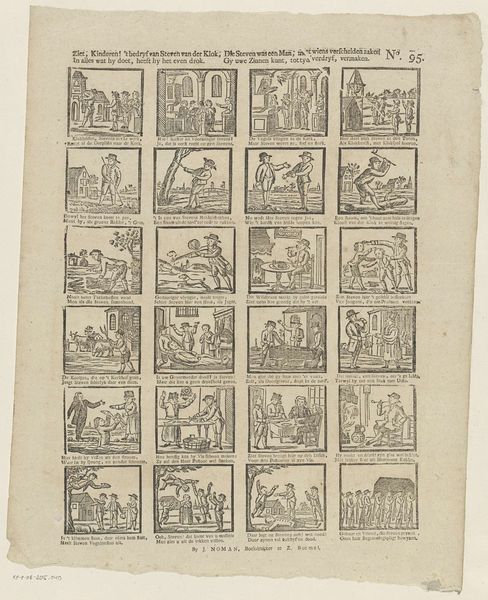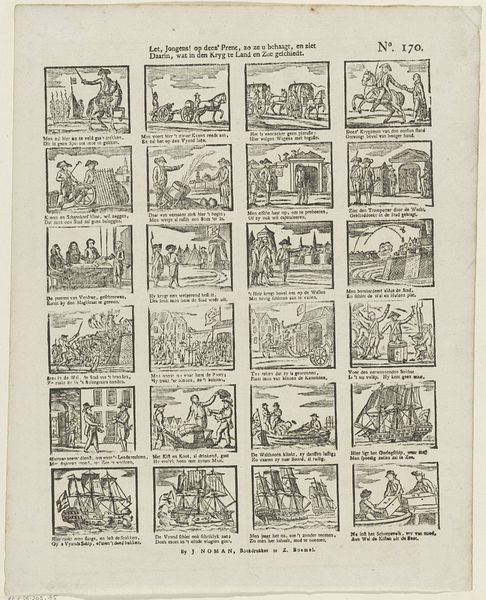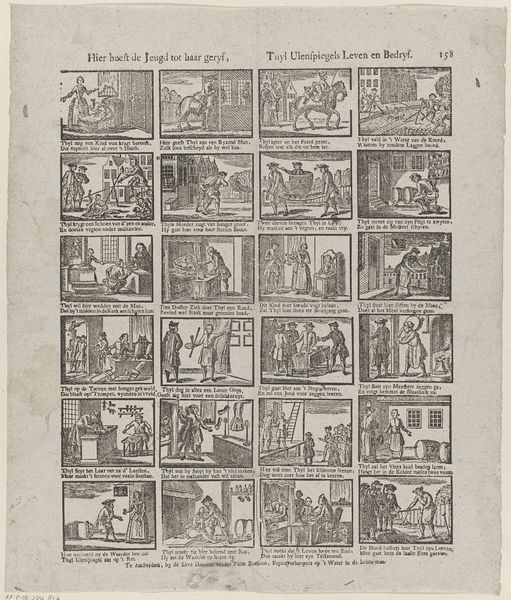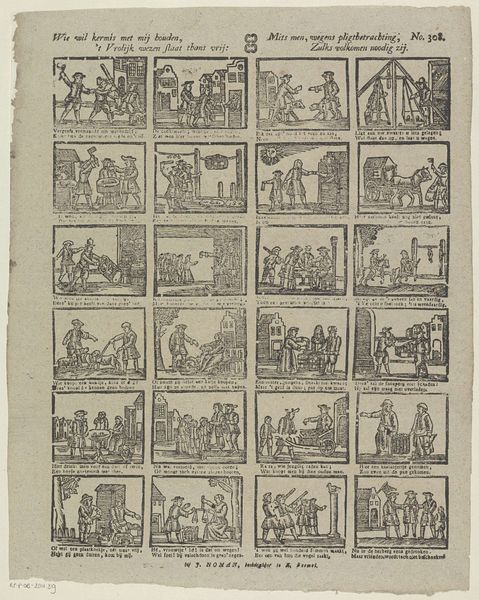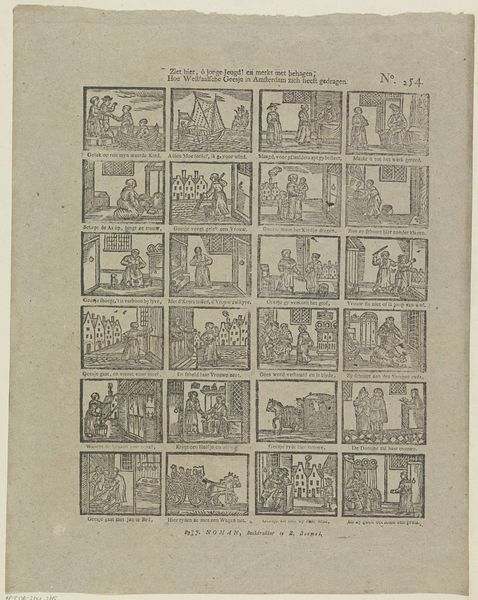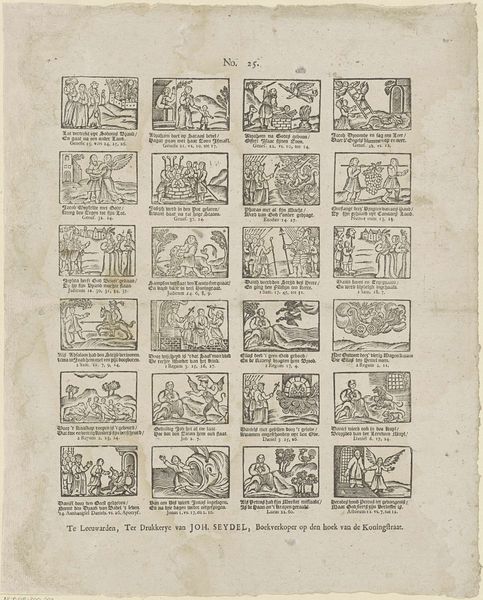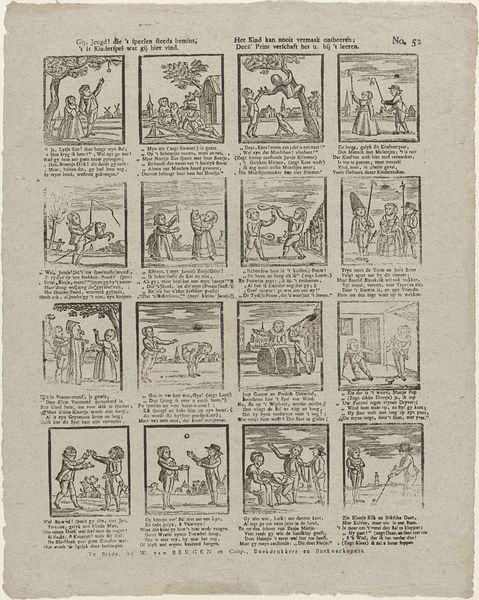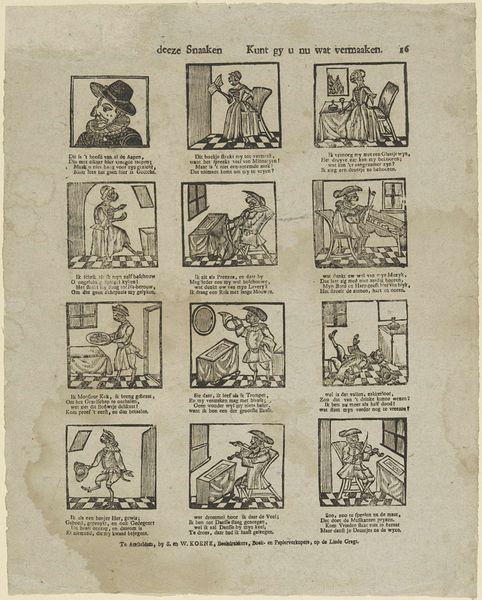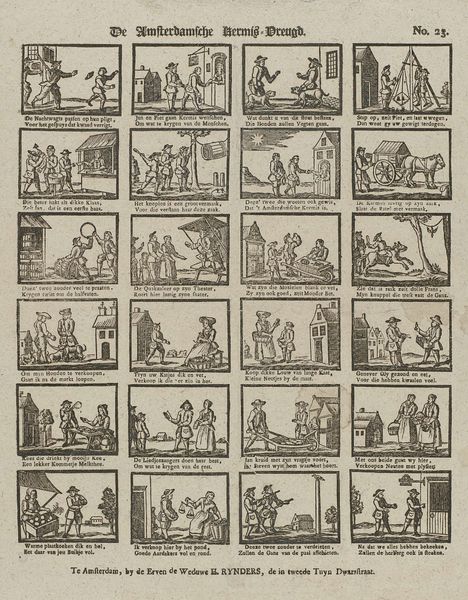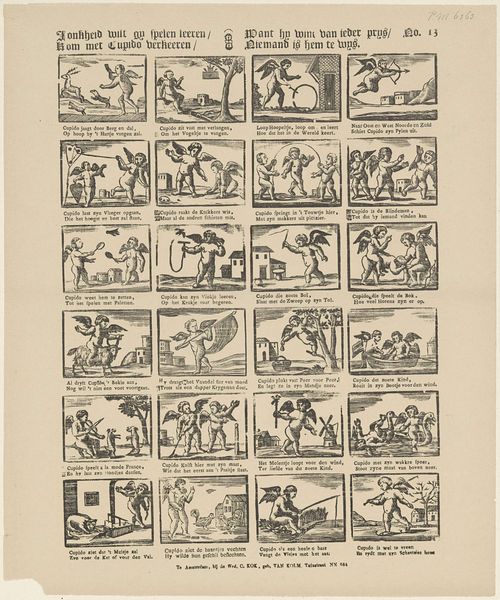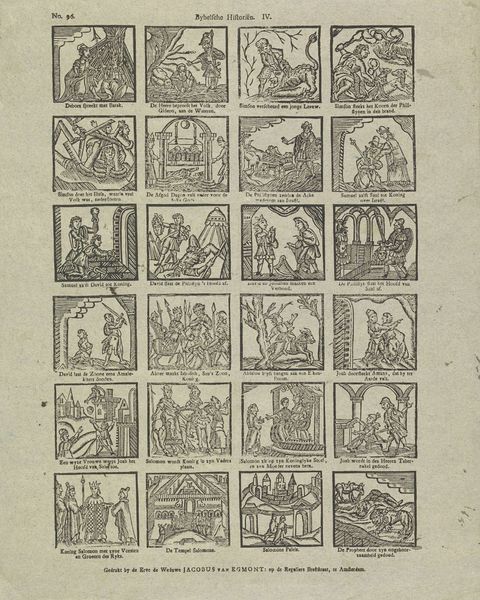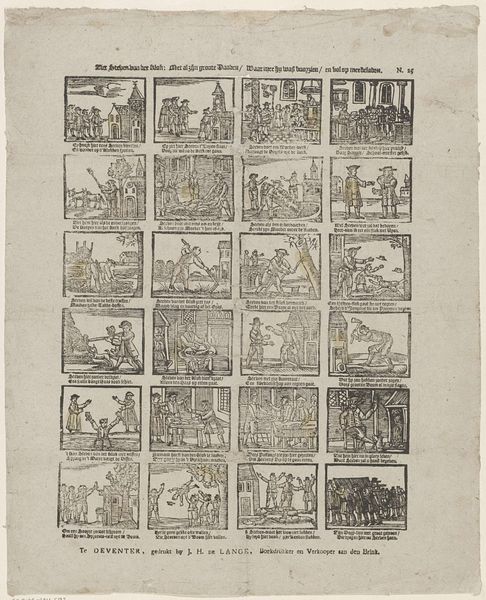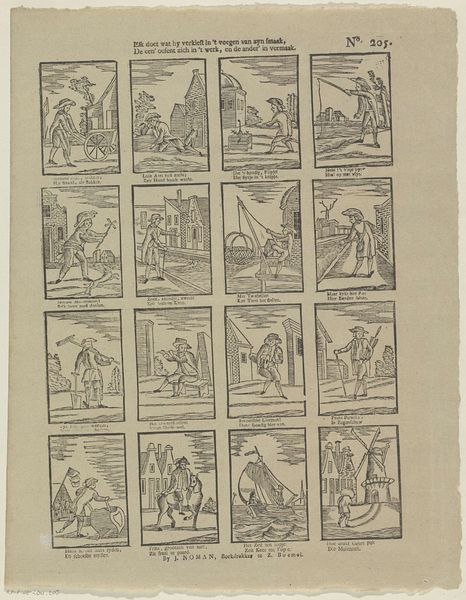
Hier hebt gy 't leven en bedryf, van Jan de Wasser met zyn wyf 1791 - 1812
0:00
0:00
jacobusthompson
Rijksmuseum
print, engraving
#
narrative-art
#
dutch-golden-age
# print
#
line
#
genre-painting
#
engraving
Dimensions: height 399 mm, width 321 mm
Copyright: Rijks Museum: Open Domain
Curator: This engaging print, held here at the Rijksmuseum, dates from between 1791 and 1812. Entitled "Hier hebt gy 't leven en bedryf, van Jan de Wasser met zyn wyf," it's attributed to Jacobus Thompson and presents, through small engraved vignettes, the life and work of Jan de Wasser and his wife. Editor: It's strikingly… repetitive at first glance. The tiny scenes all lined up like that, give the impression of something mass produced, functional almost. Curator: That’s a good starting point. The print format inherently lends itself to broader dissemination, fitting into a larger print culture aimed at moral instruction or entertainment among a wider segment of society than traditional paintings. The themes are accessible; we see Jan and his wife engaging in various domestic chores and social situations. Editor: I’m really interested in how this engraving technique democratizes art production. It's such a departure from individually crafted paintings. The marks themselves, these very uniform lines, point to a labor-intensive process. What kind of tools created those consistent engraved marks, and how did they inform the artist's creative constraints? Curator: Indeed. The method dictates a particular visual language, a simplified, almost cartoonish rendering of daily life. These were, in essence, early forms of sequential art. The inclusion of text beneath each panel, provides an important layer for interpreting the actions. We gain narrative details which were thought to influence the reading public. Editor: The relationship between text and image seems really crucial. It brings to light who can ‘read’ the artwork, whether that is determined by visual literacy alone or requiring language accessibility. It looks to be like it emphasizes didactic intent over aesthetic finesse. A manual perhaps? Curator: Possibly a little of both! It could serve as an accessible form of narrative for many, reflecting societal norms and everyday activities within a domestic sphere. Editor: Ultimately it offers glimpses into the labor and living of its period. A world visualized not just as individual masterpiece, but through repeatable image, to spread beyond elite social echelons. It becomes a kind of document of domesticity, doesn't it? Curator: Exactly. It acts as a portal back in time, revealing the importance of family and work. The print represents the power that lies within widespread production and public availability.
Comments
No comments
Be the first to comment and join the conversation on the ultimate creative platform.
